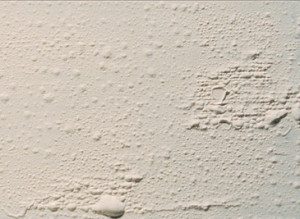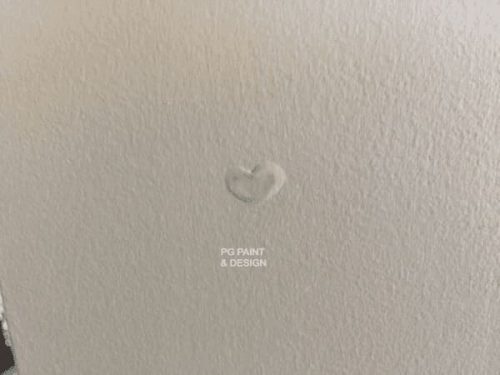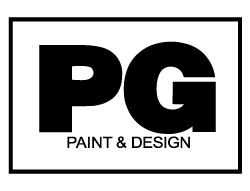Painting the interior or exterior of any home is the perfect way to update, add curb appeal and simply get a new home decor look.
At times problems with paint can arise, from the paint peeling, cracking, or bubbling, we will cover some of these and offer some tips for solutions and fixes.
Paint Problems
Some of the most common paint problems that homeowners may run into if doing their own DIY painting can be things like paint bubbles or blisters showing up after having applied a fresh coat of paint. This will happen when the paint lifts or separates from the surface due to it not properly being prepared first. These paint imperfections are caused due to the lack of adhesion of the paint to the wall surface. Ensuring all the necessary prep work is done before getting started with any painting will avoid this issue. Paint bubbles or blisters will eventually lead to the paint peeling .
Interior Paint Problems
When painting the interior and there is a presence of extreme moisture, humidity or dampness such as in bathrooms, kitchens, laundry rooms or basements it is important to make sure the area or rooms are dry and free from mold caused by moisture before applying any paint.
Opening windows, or fans is important to clear some of the humidity as well as help to dry up the extra moisture on the walls. These steps allow the paint to be applied on a well prepared surface, will provide good adhesion of the paint and will give less chances to any paint from peeling or bubbling.
Exterior Paint Problems
If painting the exterior of a porch, fence or deck while the sun is beaming on the wood, and temperatures are extremely hot and humid a painter would not apply any paint to those surfaces because they would know that the paint just wont stay on permanently.
It would eventually peel or blister. It’s the same if you paint right after it’s rained. The exterior wood should be dry for at least 3 days before any exterior painting.
Other Causes for Problems With Paint
Painting with alkyd paint over latex paint can also be the culprit for paint peeling or blistering. While alkyd paint is durable and resistant it is made up differently from the latex paint composition and it can be used for painting over latex paints.
A professional painter would be able to advise you whether there is already a pre-existing layer of alkyd or latex paint and use the appropriate paint product to paint with over these types. Care and preparation is needed before painting over alkyd paints. While you can apply alkyd over latex you cannot paint latex over alkyd.
If you must paint with latex over alkyd you must prepare the surface by removing the alkyd paint first, whether that be by sanding or stripping it. This will provide the best adhesion results. A paint primer application is recommended first.
Alkyd paints are thicker and provide a long lasting coat over any surface area, making it a good choice for high moisture and humidity areas such as kitchens and bathrooms. It keeps its sheen for a long time and any stains are not easily absorbed and no discolouration will occur. These paint finishes and sheens tips can be helpful to making the right choice.
There are a couple of drawbacks to painting with alkyd paints as they are more expensive and are not environmentally friendly as latex or water based paints. They are compounded with chemical solvents therefore emitting a higher level of VOC’s (Volatile Organic Compounds).
High VOC paints can cause health problems like headaches, nausea, and breathing disorders. It is also dangerous to expecting mothers and young children. If you are still using alkyd paints you must ensure that it is in a very well ventilated area, you must wear a respirator. Paint brushes and paint rollers have to be cleaned of any leftover alkyd paint with thinners and solvents.
Alkyd paints also take longer to dry in between paint coats. This will impact the use of the room or area in your home. At least 24 to 36 hours are needed before any furniture can be placed back into any room where the trim and baseboards were painted with the alkyd paints.
This is mostly the reason why almost all paint manufacturers today make water based paints as they are safer for everyone as well as the environment. Read more in these related articles on Water Based and Lead Based Paints Differences and the perils of Lead Paints .
Reasons Why Paint Bubbles, Blisters, Peels, or Sticks
Most often times when paint bubbles or blisters because of heat, moisture or a combination of both. When paint is applied on a damp, dirty or hot surface the adhesion of the paint will be compromised.
Other problems that may arise is paint peeling or sticking. The usual and main culprits for why interior paint to peels is moisture, failure to properly prepare the surface areas, failure to use paint primers and quality paint products that are specifically formulated for high moisture level areas like kitchens, bathrooms, laundry rooms and sometimes basements. Ensuring the use of the best paint for high humid and moisture areas is one way to avoid the headache of having the paint peel or starting the painting over again.
The same reasoning applies to why exterior paint peels. Painting in extreme heat or humidity may give you failed perfect results. When the exterior surface areas are extremely hot due to high temperatures or are soaked because of rain the paint will not adhere to any exterior surface. These are the reasons why paint peels or sticks and are completely avoidable. If the solutions to these problems cannot be fixed by a DIY’er then it’s always best to ask a painter.

Solutions To Fixing Paint Problems
To stop or prevent paint from blistering, bubbling, cracking or peeling the following professional house painting tips are suggested:
- Prepare the surface before painting.
- Scrape and remove the already blistered, bubbled or peeling paint.
- Properly seal and patch with drywall compound mix.
- Sand and clean the surface before applying a paint primer and before the finish coat of paint.
Ensure the area is clean, dry and free of moisture and humidity. If it’s a bathroom or kitchen, turn on the fans and or open the windows so that moisture can escape allowing the best possible paint adhesion for interior painting.
For exterior painting ensure the areas especially any wood surfaces are completely dry and that you are not applying the paint in extreme heat. If it has been raining allow at least 3 to 5 days for the sun to dry up the wood of any porch, fence or deck you may be painting or staining. Be mindful not to paint in extreme heat as the paint will not adhere properly.
Make sure to prepare before painting all the areas by making sure that drywall patching or repairs for interior painting are done and all pressure washing and or sanding for exterior painting are completed. Use a paint primer or sealer and quality paint products to ensure the best adhesion and application of all paint or stain. These 3 tips on buying paint can help you to find how to choose.
Knowing all the in’s and out’s of painting any interior or exterior area is key to a successful end result. If you don’t want the hassle of doing it yourself you should contact painters that may be able to help with any questions or concerns you may have. Hiring the right painting company or contractor makes the entire painting process easier and leaves you with the time and energy to enjoy your own time.
This post was originally published on May 30, 2017 at 07:00 and updated on January 28, 2020 at 1:52 pm
